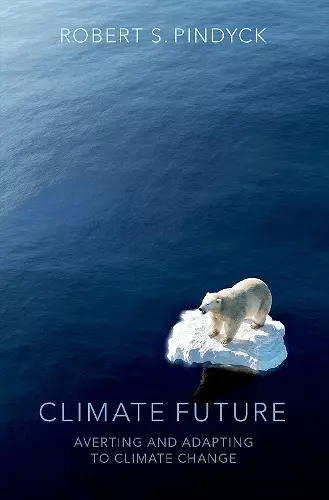Climate Future
Averting and Adapting to Climate Change
Format:Hardback
Publisher:Oxford University Press Inc
Published:14th Nov '22
Should be back in stock very soon

Most people would probably agree on what should be done to avert severe climate change: The world must reduce CO2 emissions as much and as quickly as possible. But we must also ask what will be done. Is it realistic to expect worldwide emissions to fall rapidly enough to prevent severe climate change? And if we conclude it is not realistic, and so higher temperatures and rising sea levels are likely, what should we do? What actions should we take now to reduce the likely impact of climate change? Whatever climate policies are adopted, there will be a great deal of uncertainty over what will happen as a result. In Climate Future, Robert Pindyck, an authority on the economics of climate change and global catastrophes, explains what we know and what we don't know about the extent of climate change and its impact, why there is so much uncertainty, and what it means for climate policy. This book shows that given the economic and political realities, it is simply not realistic to expect emission reductions needed to avert substantial global warming. Pindyck argues that investments in adaptation-developing new hybrid crops, discouraging building in flood-prone or wildfire-prone areas, building sea walls and dikes, and geoengineering-are needed to insure against catastrophic climate change events. We should invest now in adaptation, and Pindyck shows how that can be done.
the author concedes the need to address climate change as soon as possible to avert far greater costs of future climate heating. * Mary Ellen Harte, Quarterly Review of Biology *
One of the best books ever written about climate change. Pindyck brilliantly lays out how much we don't know, and why we don't know it. He also shows what we need to do, amidst all those question marks. (Hint: Adapt!) Intriguing and wise-and indispensable. * Cass R. Sunstein, Robert Walmsley University Professor, Harvard, and author of Averting Catastrophe *
Very different from the many other books that exist on this matter, which are either painting a totally unrealistic happy ecological transition or overly techno-optimistic, Climate Future generates an important new message: Risk management must be a key tool for optimizing our climate policies. * Christian Gollier, Director, Toulouse School of Economics, and co-author of the 4th and 5th Intergovernmental Panel on Climate Change reports *
With greatly increasing attention being given to global climate change, there has been an explosion of books and articles, some of which are worthwhile reading. But Robert Pindyck's new book is one that must be read-whether by scholars, policy makers, journalists, or the interested public. It provides a reality check by honestly and methodically assessing what we know and what we don't know about climate change and the possibilities of averting and adapting to it. Pindyck is a world-class economist, at the top of his game, and a leader in the area of energy and environmental economics. His book is solid yet fresh, broad yet deep, and ultimately of tremendous value. * Robert N. Stavins, A. J. Meyer Professor of Energy and Economic Development, John F. Kennedy School of Government, Harvard University *
Pindyck (Massachusetts Institute of Technology) describes in detail the impact of changing carbon dioxide levels on Earth's temperature and why greenhouse gases have this effect on the environment. The premise of his argument is to examine what policies at the national and international levels could avert the temperature increase and what potential strategies exist for adapting to the changing climate. Pindyck clearly shows that no single policy or strategy will change the climate trajectory and that a comprehensive approach across all sectors of the economy that includes reducing emissions and energy demand, adopting conservation practices that reduce energy demand, and utilizing different forms of energy is required. * Choice *
ISBN: 9780197647349
Dimensions: 238mm x 164mm x 22mm
Weight: 544g
248 pages